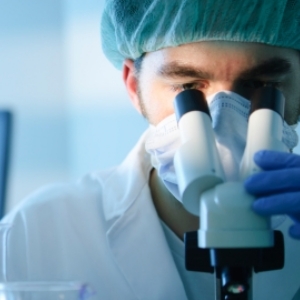
Some parts of the body, like the liver, can regenerate themselves after damage. But others, such as our nervous system, are considered either irreparable or slow to recover, leaving thousands with a lifetime of pain, limited mobility, or even paralysis.
Now a team of Tel Aviv Universityresearchers, including Dr. Shimon Rochkindof TAU's Sackler Faculty of Medicine andTel Aviv Sourasky Medical Center andProf. Zvi Nevo of TAU's Department of Human Molecular Genetics and Biochemistry, has invented a method for repairing damaged peripheral nerves. Through a biodegradable implant in combination with a newly-developed Guiding Regeneration Gel (GRG) that increases nerve growth and healing, the functionality of a torn or damaged nerve could ultimately be restored.
This innovative project is now gaining international recognition. Its initial successes were reported recently at several renowned scientific congresses, including the World Federation of Neurological Societies and the European Neurological Society. And the therapy, already tested in animal models, is only a few years away from clinical use, says Dr. Rochkind.
Like healing in the womb
A nerve is like an electrical cable. When severed or otherwise damaged, power can no longer be transferred and the cable loses its functionality. Similarly, a damaged nerve loses the ability to transfer signals for movement and feeling through the nervous system.
But Dr. Rochkind and Prof. Nevo found a way to breach the gap. In their method, two severed ends of a damaged nerve are reconnected by implanting a soft, biodegradable tube, which serves as a bridge to help the nerve ends connect. The innovative gel which lines the inside of the tube nurtures nerve fibres growth, encouraging the nerve to reconnect the severed ends through the tube, even in cases with massive nerve damage, Dr. Rochkind says.
The key lies in the composition of the gel, the researchers say, which has three main components: anti-oxidants, which exhibit high anti-inflammatory activities; synthetic laminin peptides, which act as a railway or track for the nerve fibres to grow along; and hyaluronic acid, commonly found in the human foetus, which serves as a buffer against drying, a major danger for most implants. These components allow the nerve to heal the way a foetus does in the womb — quickly and smoothly.
Keeping cells safe for transplant
The implant has already been tested in animal models, and the gel by itself can be used as a stand-alone product, acting as an aid to cell therapy. GRG is not only able to preserve cells, it can support their survival while being used for therapy and transplantation, says Dr. Rochkind.
When grown in the gel, cells show excellent development, as well as intensive fibre growth. This could have implications for the treatment of diseases such as Parkinson's, for which researchers are actively exploring cell therapy as a potential solution.




 Publications
Publications
 Partners
Partners













